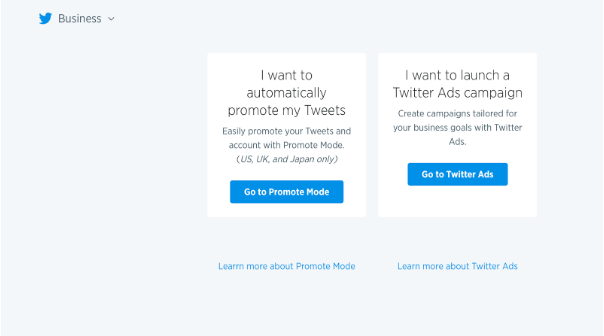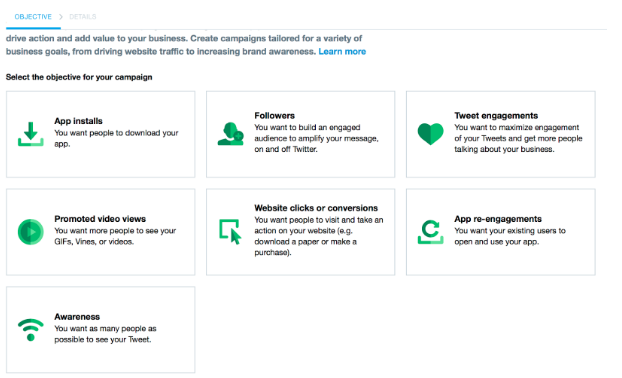Over the past decade, we’ve seen the unstoppable rise of social media. It’s a multi-billion dollar industry with platforms that grab and retain user attention. It is, in short, the ideal battleground for brands to advertise and gain new business. Below, we will look at how any startup can drive revenue by finding more leads through Twitter and boosting conversion rates by creating stronger insight through CRM tracking of those leads.
The biggest mistake brands make on Twitter
The biggest mistake that most brands make is focusing on vanity metrics as an indicator of success. Instead of looking at how a campaign impacts their bottom line, they optimize based on impressions, clicks and traffic.
This is a recipe for failure.
You must track Twitter user interaction all the way through to the sale; otherwise you have no idea how the vanity metrics are actually impacting your business overall.
Admittedly, Google Analytics can help with this, but for the most complete overview of your users and how they’re engaging with your brand, you need to integrate Twitter with your CRM. This step is key to fleshing out your user profiles and figuring out the best ways to market to them.
Related: 4 Lessons in Brand Management from the Twittersphere
How to generate leads on Twitter
Like any other social media platform, Twitter comes with a suite of advertising tools to help you drive traffic and leads, which is probably the easiest place for any entrepreneur to begin.
Once you log into the Twitter ads dashboard, you’ll be greeted with the following:
When you click on “I want to launch a Twitter Ads campaign,” you’ll be given seven options based on the goal:
Here’s how each campaign goal breaks down:
- Awareness: Awareness allows you to push the reach of your tweets. It’s the only campaign charged by CPM (cost per 100 views) and a good way to get your Tweets in front of a large audience.
- Followers: The primary goal here is to increase your follower count, and you pay for every new follower. You’ll see the ads either in the top right of the Twitter home page, or as part of the user’s feed like this. This is a great technique when launching a new brand, but otherwise paying for followers isn’t ideal.
- Web clicks or conversions: If you’re tracking through your CRM, this is going to be one of the options you’ll want to explore. Each promoted Twitter Ad includes a “learn more” or customized text button to get the user to your site or landing page. The user clicks on the image/button, and once taken to the site, are considered a site visitor who could potentially become a lead.
- Tweet engagements: This is simply a method to try to increase the engagement of your tweets. It’s not going to have the same impact on your bottom line as other campaigns, but can be good for audience research.
- App installs or app re-engagements: App installs and re-engagement campaigns are great for those who have an app. The campaign puts an app with a direct download/open button in the user’s Twitter feed.
- Video views: Video views promotes your videos to a target audience of customers and charges based on view length. Video can be a great way to drive users to a higher converting page. I’d recommend using video to grab users’ attention, and then direct people with a CTA to a conversion page. For lead generation, I’d recommend focusing on either video (with a relevant sign up CTA included) or web clicks and conversions that directs to a dedicated landing page. However, once this initial interaction is out of the way, you’ve got to know how these leads and traffic are interacting throughout your funnel.
How to effectively track Twitter leads
The above ad formats will help you drive targeted traffic to your site or into the top of your sales funnel. However, it’s not enough to simply drive traffic; you need to track the leads that come your way in order to market to them effectively and ensure that every opportunity is maximized. This requires tracking the lead’s entire journey, from the initial Twitter engagement to the final close of a sale.
This can be difficult for many entrepreneurs, as they are usually distracted by doing any number of tasks at once or are too focused on building social credibility instead of actual customers. However, this can be made much easier by using tools that integrate CRMs and social media tracking.
Here are two examples:
- HubSpot CRM has a specific social media integration which feeds all social media activity into your overall CRM data.
- Salesforce also has a Twitter-specific integration.
I’m going to use HubSpot to explain how you can more effectively track your Twitter leads in your CRM, as it has a pretty powerful tool and offers a free CRM, which is perfect for bootstrapped startups. At its core, HubSpot’s Twitter monitoring is an effective social media listening engine. You can set it up to monitor for certain keywords before pulling them into a stream for easy analysis.
What makes HubSpot stand apart is how you can filter these streams based on the contact details you’ve already collected. This means you can effectively monitor only the Twitter activity of a specific group of people, i.e. those who are already within your CRM.
You can pull the Twitter information within the HubSpot CRM straight into the contact’s profile, which gives you incredible insight into a lead’s profile, which is critical for improving conversion rates.
What does this mean in the real world?
Let’s look at a real example to help clarify how this process can work for a startup looking to generate leads, track their journey and eventually convert those leads into customers.
Step 1: Lead Capture Landing Page
First, let’s say that you have set up a landing page designed to capture qualified leads.
This can be done in a variety of ways, but my advice is to always present a value exchange that gets people excited. Give your leads something first, and they will provide you with their contact information in exchange. This might done through free eBooks, newsletters, contests or other complimentary tools/resources.
Step 2: Lead Generating Twitter Promotion
Once you have established something that can capture lead information, you can start to promote it actively on Twitter. This can be done organically or against a paid advertising campaign. Of course, you don’t want to saturate your audience in CTAs, but the occasional tweet or targeted promotion on Twitter will help you drive traffic to your landing page.
Step 3: Automatically Track Your Leads in a CRM
Once you have somewhere to direct your traffic and you have a decent trickle coming in from social media, you want to make sure that you are accurately and easily capturing their information. This can be done manually every time a lead comes in, or automatically using a tool like Zapier.
If your landing page uses a Mailchimp signup form to capture your lead’s information, it’s super easy to integrate this directly into a CRM.
Sign Up: Receive the StartupNation newsletter!
Step 4: Track Social Activity of Your Leads
Now that you have all of the leads captured and tracked in one place, you can start to monitor activity to gain greater insight into your leads. It is important to watch for trends among your leads, so you can use that information to segment your contact lists based around interests or marketing opportunities.
For example, you may start to notice that some leads engage or respond better to video content, while others tend to share long-form content. This gives you a strong indicator as to the type of marketing content that will have the biggest impact on them, while guiding you on how to segment your leads for your next marketing step.
You can take these cues to add notes to your CRM and create distinct contact lists for each type of lead, which will help you curate and understand your leads in a much more advanced manner.
Step 5: Develop Marketing Strategies for Each Segment of Your Contact List
Segmentation is an incredibly important aspect to improving your conversion rates that most startups fail to do, simply because it takes more time and effort than treating every lead the same. It is important to realize that every lead is not equal. People can respond very differently to the exact same piece of content, so the more personalized you can make your marketing efforts, the better your results will be.
Even if your only follow-up strategy is email marketing, there is plenty of evidence that demonstrates segmentation improves results.
The important thing for any startup to remember is:
- Monitor lead activity and identify marketing opportunities
- Segment leads into groups based on related activity
- Market to those segments in the most personalized and effective manner possible
Bonus Step: Evaluate results to improve lead generation
Any good marketing plan is always open to review and modification based on the results.
Once you have a system in place, you can then start to test different CTAs, content and engagement strategies to optimize your efforts.
You can easily create distinct contact lists that test different approaches against each other. This will help you find out what works best and what attracts the most ideal customer for your startup.
While this isn’t an overnight plan, constant review and testing of new approaches will eventually establish a pipeline that keeps leads knocking on your digital door and customers signing up.








